
Rich coastal city studded with architectural marvels and subject of Freddie Mercury’s operatic tribute
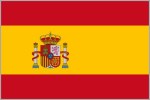
Barcelona is the second-largest city in Spain with a population of around three million, and the capital of the region Catalunya, as written in Catalan. During the Franco regime regional languages such as Catalan were forbidden, which is perhaps partly the reason that the language is now used more widely than Castellano (the standard Spanish spoken in Madrid) in the region, as the people try to maintain their culture. There are some movements for independence in Catalunya, as is the case in a number of Spanish regions, in particular País Vasco.
Barcelona is one of my favourite places in Spain, the feel of the city appeals to me and there is plenty to do. The bus tour of the city cannot possibly be done in just one day as there is just too much to take in. One of the main tourist attractions is the collective works of Antoní Gaudi, scattered about the city. He was one of the most original architects the world has seen, and nobody has since been able to imitate his work effectively.

Las Ramblas is the primary pedestrian precinct through the old city, running from Plaça Catalunya down to the statue of Columbus at the port, it is where the action is no matter what time of day. Full of street entertainers, stalls selling anything from chocolate and churros to parrots and chickens (live, but I don’t know what tourist would want to buy a live chicken on holiday). During all my visits to Barcelona in the 2000s, I stayed in hostels just off this street.
This was a temporary exhibit in the Plaza del Rey about the work Gaudi has done, what with 2002 being the 150th anniversary of his birth. Here his name is inscribed in neon across the Museu Frederic Mares in the Barrio Gótico.
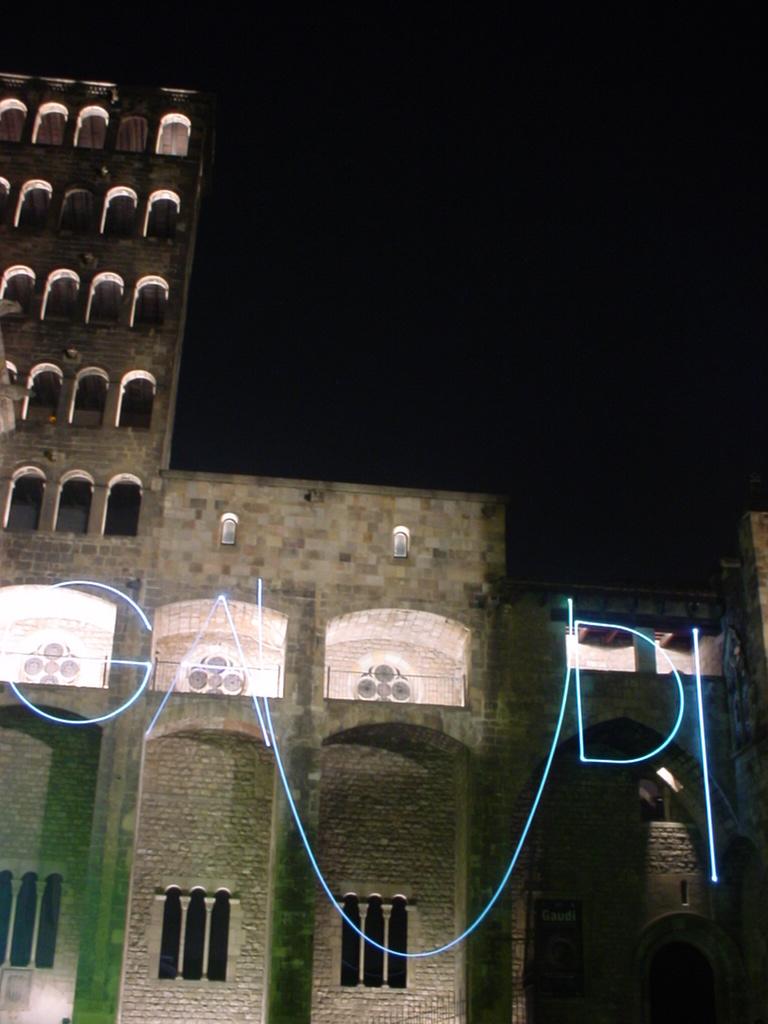
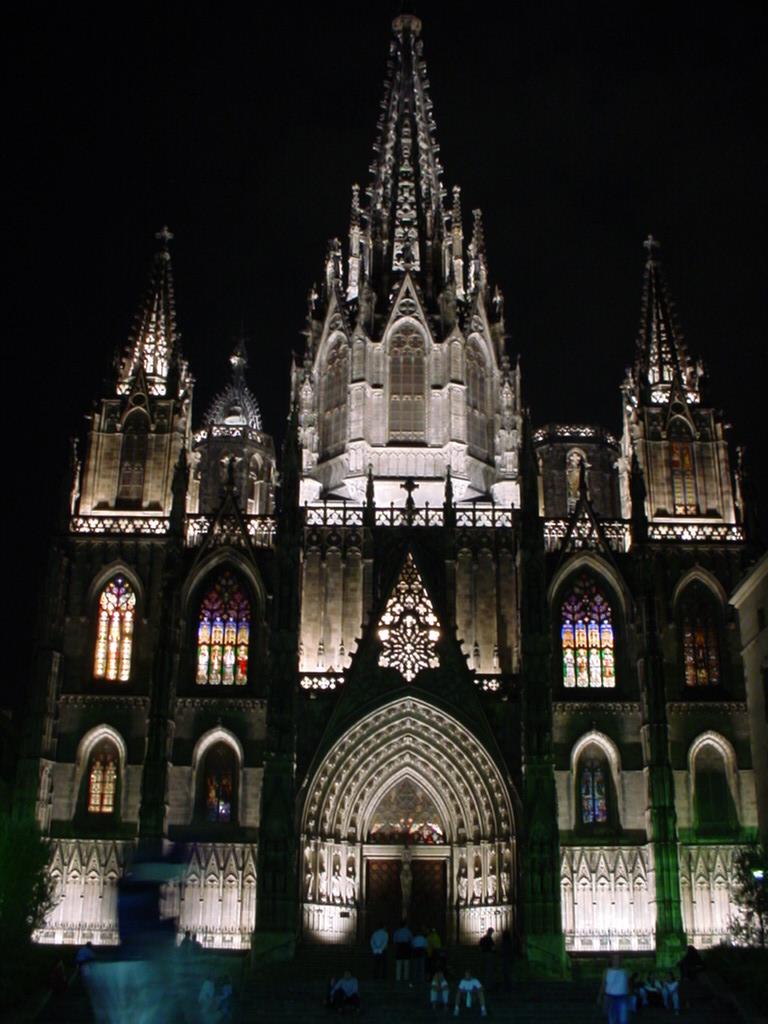
Right around the corner from the Gaudi exhibition in the photo above is the cathedral, central to the Barrio Gótico. Parts of it are modern reconstructions of the original from the 14th century, other parts are from the 15th century too.
Barrio Gótico is full of lots of little lanes and alleys like this one, with high buildings on either side, they are quite enclosed. It’s interesting to wander round and explore them, you never know what you might find.

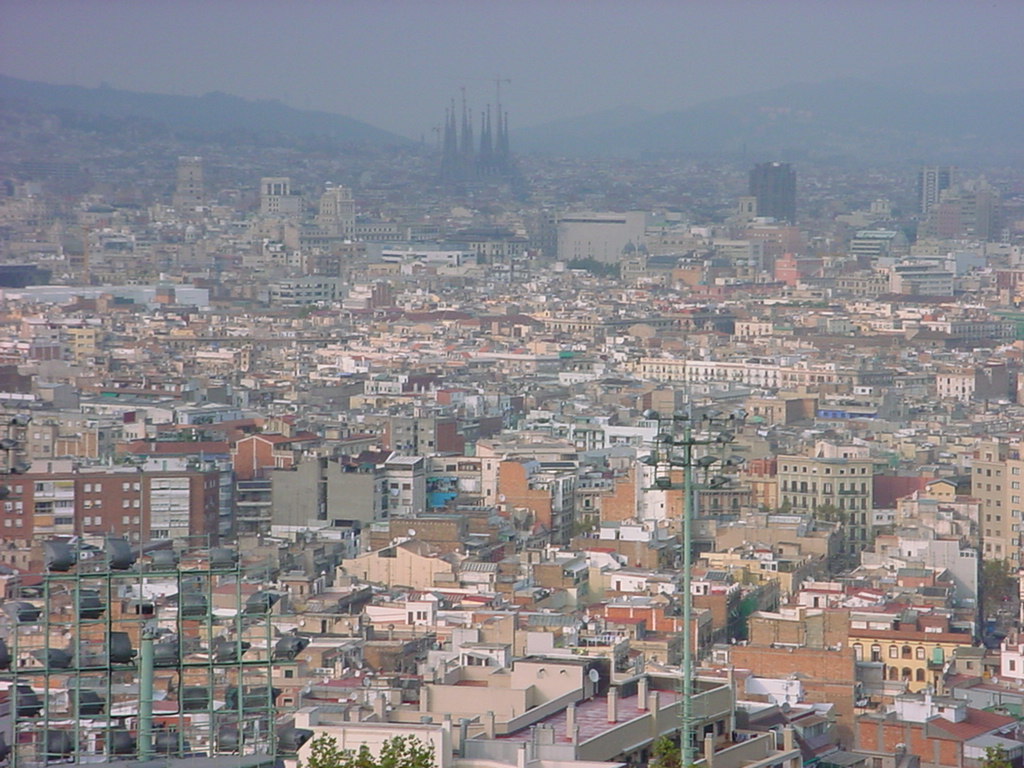
Barcelona as viewed from the cable car up to the summit of Mont Juïc. Outside of the old city the map resembles a chess board with countless blocks all the same size and orientation. In the distance the spires of La Sagrada Familia can be seen, along with the mountains which surround the city.
This funny little lizard beastie adorns surprisingly many postcards in the city, and seems to be quite iconic of Gaudi. He sits in Parc Güell and is nicknamed El Drac (the Dragon), and I had to wait for a very long time to take a picture of him without some clown sitting astride his girth and having their own picture taken.
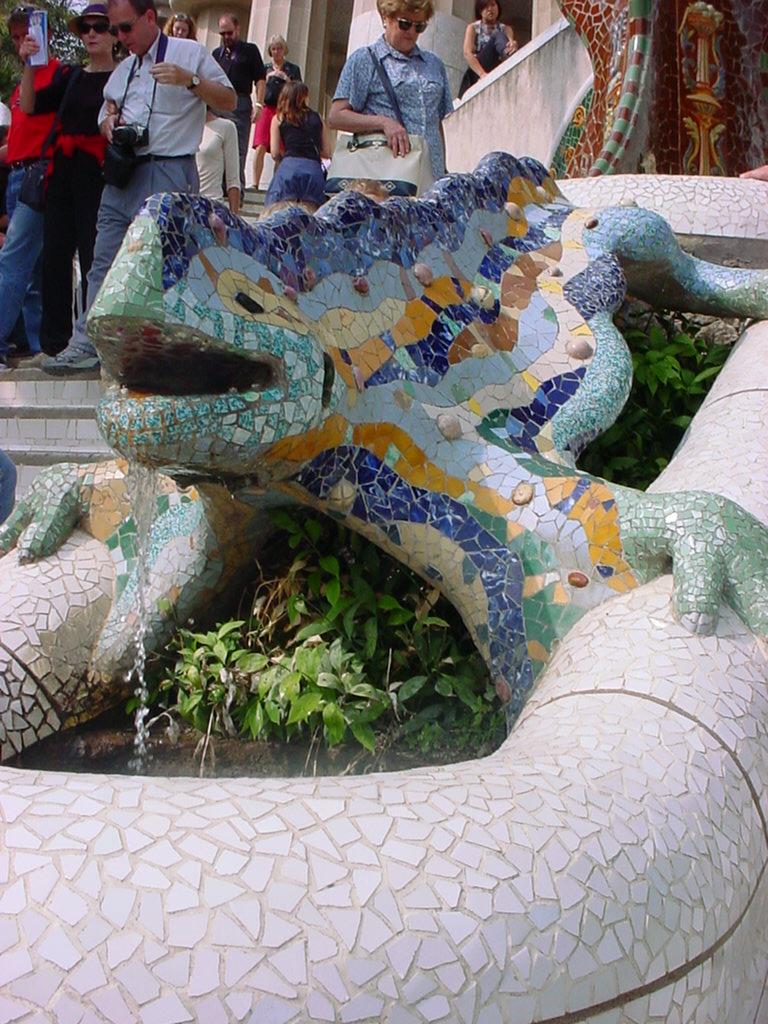

One of the little houses in Parc Güell designed by Gaudi, this is one of the houses flanking the entrance to the park. A similar one on the opposite side of the gate contains a gift shop. The roof is very typical of Gaudi, he never liked to use straight lines as he said they didn’t occur in nature.
The main entrance to Parc Güell is evidently a popular place for newlyweds to have their picture taken, and it seems to be perpetually busy with tourists. A lot of Gaudi’s work is contained within the park, and one of his former houses is located inside too.
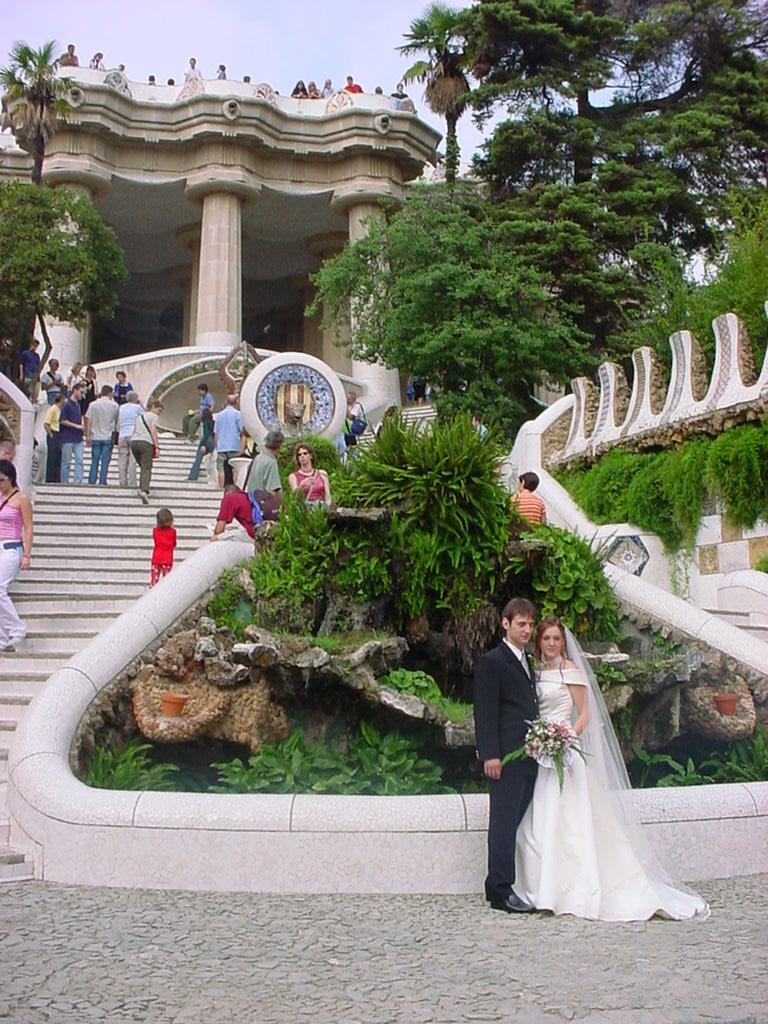

Another of Gaudi’s creations, Casa Batlló was perhaps my favourite, it looks like it might have been made out of bones from a woolly mammoth or other such long-extinct creature.
Gaudi’s unfinished life work is the Church of the Holy Family, or La Sagrada Familia. He took over the design and building direction in 1884 after previous architects couldn’t quite cut it. In his lifetime he saw only the crypt and one of the nativity towers completed, (the one on the left) as he was hit by a tram in 1926. During the civil war almost all of Gaudi’s plans and models were destroyed, which is making it very difficult to continue construction as nobody else can recreate his ideas.

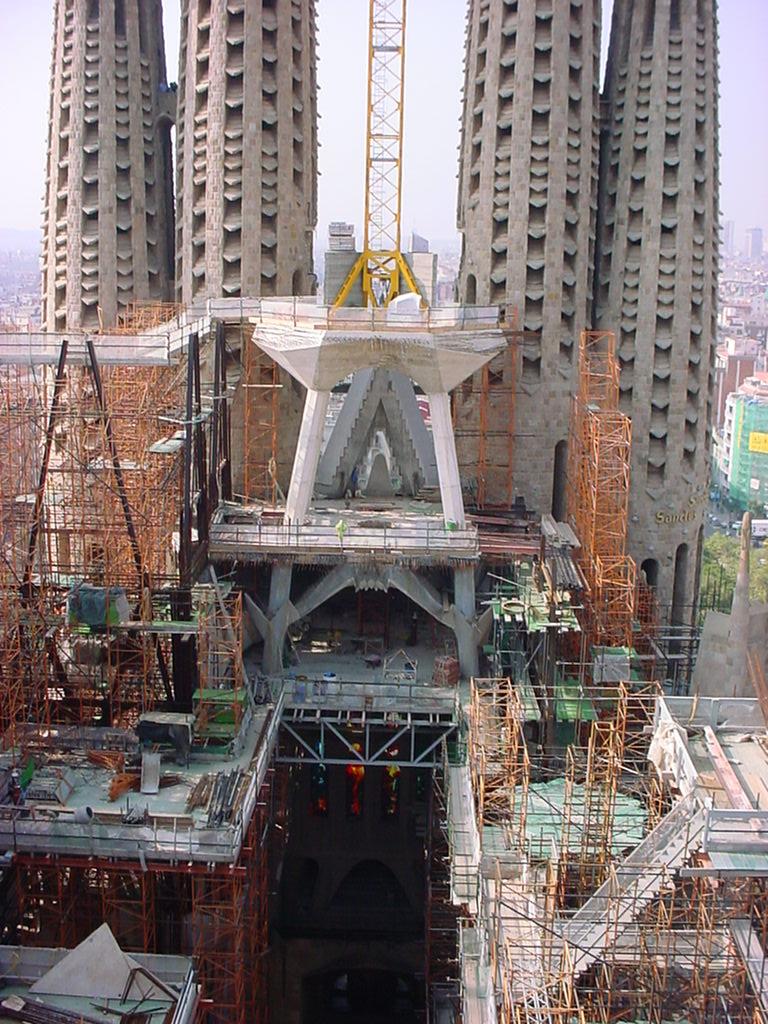
This view generally isn’t printed on postcards, but most of the building is still an active construction site. At my visit in 2002, it was projected to be complete by 2021, however by 2015 this had pushed back well into the late 2020s. The newer parts are made from reinforced concrete, not stone like the original sections which has sparked criticism. However I will definitely be coming back when it’s done as this will indeed be the greatest basilica in the world. Michelangelo, eat your heart out…
A hideous gargoyle had recently been added to the church. I am standing in one of the little pod balconies off the side of one of the Nativity towers. It was a lot of fun scrambling around the narrow staircases up and down inside the building, and peering over great drops to the ground.

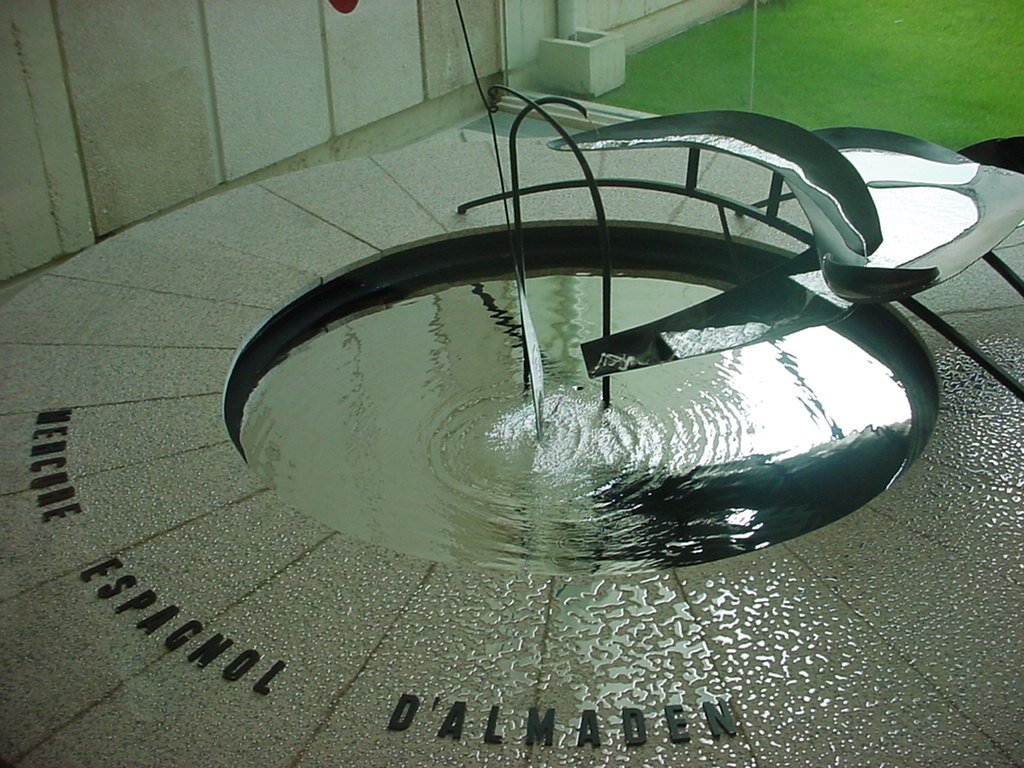
We visited the Joan Miró foundation on Montjuïc, which is replete with great examples of his colourful and often highly abstract works. One piece that really caught my eye was this little fountain. On closer observation you can see that it is not water flowing but pure mercury – note the metallic surface and splatters round the edge by the writing.
Created 2002 | Updated 2015
